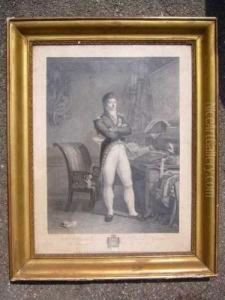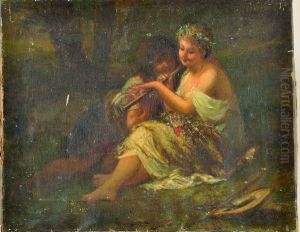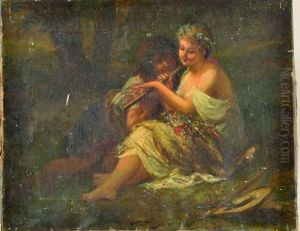Augustin Desire Pajou Paintings
Augustin Pajou was a prominent French sculptor of the 18th century, born on September 19, 1730, in Paris, France. He was renowned for his mastery in creating portraits, allegorical figures, and decorative sculptures that exemplified the grace and elegance of the Rococo style, while also incorporating elements of the emerging Neoclassical style.
Pajou received his early training from his father, a woodcarver, which afforded him a solid foundation in the arts. He further honed his skills as a student at the Royal Academy of Painting and Sculpture in Paris, where he studied under renowned sculptor Jean-Baptiste Lemoyne. Demonstrating considerable talent at a young age, Pajou won the prestigious Prix de Rome in 1752, which allowed him to study at the French Academy in Rome. This experience had a profound influence on his artistic development; exposure to classical art and Renaissance masterpieces helped mold his aesthetic approach.
Upon returning to France, Pajou quickly gained recognition and was commissioned to create sculptures for various royal residences and public spaces. He became a member of the Royal Academy in 1760 and later served as a professor and rector, significantly influencing French sculpture of the time. Some of his most celebrated works include the busts of philosophers such as Voltaire and Diderot, the statue of Louis XV in the Place Royale at Reims, and decorative works for the Palace of Versailles.
Pajou's work is characterized by a refined elegance and a fluidity of form. He was adept at capturing the character and personality of his subjects in his portraits, while his mythological and allegorical figures often conveyed a sense of movement and vivacity. Throughout his career, he skillfully navigated the changing tastes of the period, adapting his style to suit the more austere and classical preferences of the late 18th century.
Augustin Pajou continued to work and receive commissions even in the turbulent times of the French Revolution. His art was appreciated by both the aristocracy and the new political regimes that followed, allowing him to maintain his status as a leading artist in France. Pajou passed away on May 8, 1809, in Paris, leaving behind a legacy that would influence French sculpture for generations. His works are preserved in numerous museums and collections, including the Louvre Museum in Paris, which holds a significant number of his sculptures and drawings.


